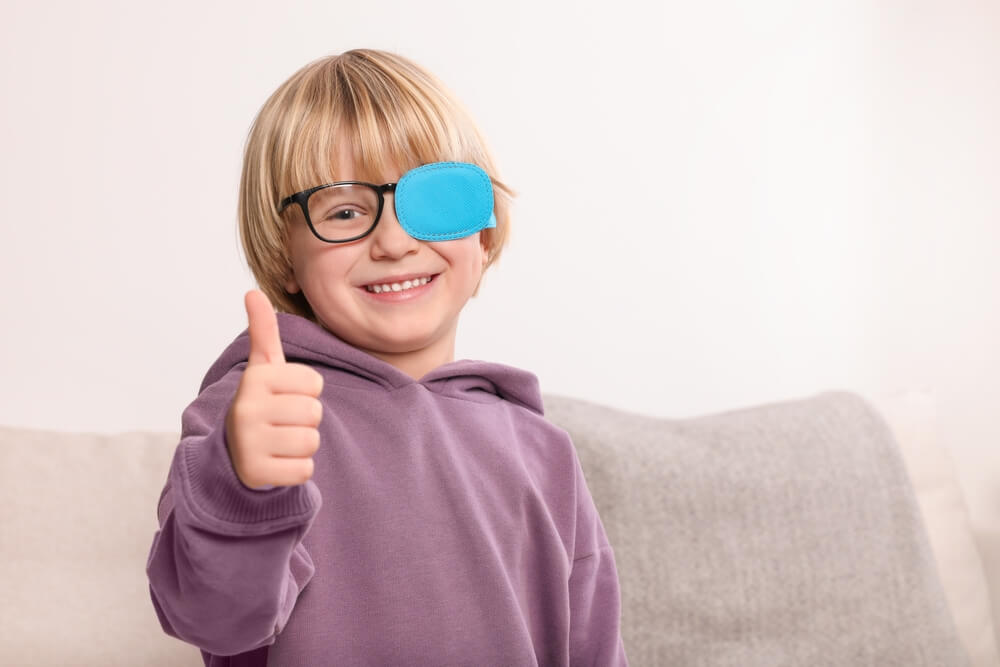Welcome to our expert guide to strabismus, a condition that affects the alignment of the eyes and can impact vision and depth perception. In this comprehensive guide, you will gain a deep understanding of what strabismus is, its causes, common symptoms, and available treatment options. Furthermore, we will also feature natural methods to correct cross eyes in the simplest way possible, along with a collection of effective strabismus exercises to get you started.
But first, make sure to consider expert pediatric care in Miami, Florida. Our goal is to provide you with valuable insights and practical advice to ensure your child’s well-being and optimal eye health.
That said, here is what you must know about this condition and how to fix cross eyes naturally.
What Does Strabismus Mean?
Strabismus, commonly known as “cross-eye,” is a condition characterized by the misalignment of the eyes. In individuals with strabismus, one or both eyes may deviate inward, outward, upward, or downward, disrupting their ability to focus and coordinate both eyes effectively.
While strabismus can occur at any age, it is widespread among children. Early detection and intervention are crucial for successful treatment and optimal visual development. If you suspect that your child may have cross eyes, it is important to consult with a trusted professional such as Doctor Ana, a skilled and experienced healthcare provider specializing in pediatric eye care.
Contact Doctor Ana, an expert who can conduct a thorough examination to assess your child’s eye alignment, visual acuity, and overall eye health. A professional will help determine the type and severity of strabismus, identify any underlying causes, and recommend appropriate treatment options tailored to your child’s specific needs.
Remember, prompt attention and intervention can make a significant difference in managing strabismus and preventing potential vision problems in the future.

What are the Main Symptoms of a Child with Strabismus?
Children with cross eyes may exhibit various symptoms that indicate the misalignment of their eyes. Here are some of the most frequent symptoms and signs to consider:
- Misaligned Eyes: One of the most noticeable symptoms is the visible misalignment of the eyes. One eye may turn inward, outward, upward, or downward compared to the other eye. This misalignment can be constant or intermittent.
- Squinting or Closing One Eye: Children with cross eyes may squint or frequently close one eye to try to correct their vision. By doing so, they may attempt to reduce double vision or improve their focus.
- Eye Fatigue or Strain: Strabismus can cause eye strain, discomfort, or fatigue, especially when the child is engaged in visually demanding activities like reading or focusing on objects at different distances. They may complain of headaches or tiredness after prolonged visual tasks.
- Double Vision: When the eyes are misaligned, the brain receives conflicting visual inputs from each eye, leading to double vision. Children may express confusion or have difficulty perceiving objects clearly.
- Poor Depth Perception: Strabismus can negatively impact depth perception, making it challenging for a child to judge distances accurately. They may have difficulty with activities that require depth perception, such as catching a ball or judging steps.
- Squinting or Tilting Head: In an effort to align their eyes or improve vision, children with strabismus may tilt their head in a particular direction or adopt specific head postures. This compensatory behavior can be a noticeable sign of their eye misalignment.
What are the Key Causes of Strabismus?
Crossed eyes in children can have various causes. Here are some common factors that can contribute to the development of crossed eyes:
- Weak Eye Muscles: The muscles responsible for controlling eye movement and alignment may not work together properly in some children. If one eye muscle is weaker or stronger than the other, it can cause an imbalance that leads to crossed eyes.
- Refractive Errors: Uncorrected refractive errors, such as nearsightedness, farsightedness, or astigmatism, can contribute to crossed eyes. When the eyes struggle to focus correctly, the brain may suppress the image from one eye, leading to misalignment.
- Family History: There is often a genetic component to strabismus. If one or both parents have a history of crossed eyes, their children may be more prone to developing the condition. Genetic factors can influence the muscles, nerves, or control mechanisms responsible for eye alignment.
- Neurological Factors: In some cases, crossed eyes can be associated with underlying neurological conditions. Conditions like cerebral palsy, Down syndrome, or brain tumors can affect the control of eye muscles and result in strabismus.
- Eye Injuries or Trauma: Trauma to the eyes or head can disrupt the normal functioning of the eye muscles and lead to crossed eyes. Injuries that affect the nerves or muscles involved in eye movement can cause misalignment.
Hypertropia: A Guide for Parents
Hypertropia is a specific type of strabismus where one eye is positioned higher than the other when looking straight ahead. It is a form of vertical misalignment where the eyes are not aligned horizontally. Here are three key facts parents should know about hypertropia:
- Vertical Misalignment: Hypertropia refers to the upward or downward displacement of one eye relative to the other. The misalignment can cause one eye to appear higher or lower than the other, affecting the balance of eye alignment.
- Impact on Vision and Depth Perception: Hypertropia can lead to double vision or reduced depth perception. The misalignment affects the eyes’ ability to work together, which can impact a child’s visual perception and coordination.
- Treatment Options: The treatment of hypertropia depends on the underlying cause and severity. It may involve eyeglasses, vision therapy exercises, patching the eye, or in some cases, surgical intervention. Early detection and intervention are crucial to managing hypertropia effectively and optimizing visual development.
It is essential for parents to consult with an eye care professional, such as an ophthalmologist or a pediatric ophthalmologist, to diagnose and develop a personalized treatment plan for their child’s hypertropia.

Surgery for Cross Eyes: A Viable Option?
Yes, surgery can be done to fix crossed eyes. The surgeon adjusts the eye muscles to improve alignment. The procedure is done under anesthesia. However, surgery doesn’t guarantee perfect vision or fix all vision issues. Other treatments like vision therapy or glasses may be needed to help with vision.
How to Fix Cross Eyes Naturally: Steps to Take
Here are five easy natural ways to potentially help with crossed eyes:
- Strabismus Exercises: Encourage your child to engage in strabismus exercises to strengthen eye muscles and improve eye coordination. For example, have them focus on an object held at arm’s length, then shift their gaze to a distant object. Repeat strabismus exercises like this one several times daily to promote eye movement and flexibility.
- Pencil Push-Ups: Strabismus exercises like pencil push-ups involve holding an item at arm’s length and slowly bringing it closer to the nose while maintaining focus. The child can stop when they see double and then move the pencil back out. This exercise can be done daily to improve convergence and eye alignment.
- Eye Tracking Activities: Engage your child in activities that require tracking moving objects, such as tossing and catching a ball or following the movement of a toy. These activities can enhance eye-tracking skills and improve eye coordination.
- Visual Scanning: Encourage your child to scan their surroundings by looking from left to right and up and down. This helps develop better eye movement control and coordination. You can incorporate visual scanning into everyday tasks, like searching for items in a room or reading signs while walking.
- Healthy Lifestyle Habits: Maintaining a healthy lifestyle can support overall eye health. Ensure your child gets proper nutrition, including foods rich in vitamins A, C, and E and omega-3 fatty acids. Encourage regular breaks from screen time, adequate sleep, and outdoor activities to reduce eye strain and promote healthy visual development.
Give Us a Call Today
Don’t hesitate to reach out to an expert and embark on a journey toward a clearer, aligned vision for your child. Contact us today!




